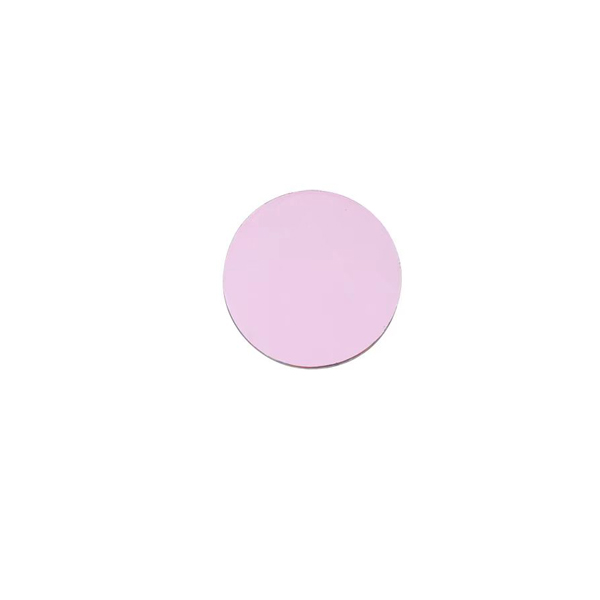

664/27nm Precision Optical Filter
664/27nm Precision Optical Filter is designed to transmit light centered 664nm and FWHM 27nm. Coligh manufactures narrow to wide band hard coating filter.
It has features below:
- Center wavelength 664nm
- FWHM 27
- Transmission above 90%
- Blocking depth OD>=6
- ION Assisted Hard Coating
- Custom highly welcomed
Products Categories
Get A Free Quote
Narrow Band Optical Filter 664nm FWHM 27nm Description
664/27nm Precision Optical Filter Coligh manufactures are designed to precisely control the spectral transmission of the 650.5nm–677.5nm deep red light band.
- We use multi-layer dielectric film interference design and ion-assisted deposition technology to use different film thicknesses and refractive indices to selectively reflect and transmit the incident light, forming a transmission window with a 27nm bandwidth centered at 664nm.
- The central wavelength is 664+/-1nm, the bandwidth is 27+/-1nm, covering the 650.5nm–677.5nm spectral range, which is optimized for deep red light applications and can achieve highly specific spectral analysis for bioluminescent markers Cy5.5 and methane.
- The transmittance in the passband is greater than or equal to 90%, and the cutoff depth OD6 in the range of 350-1000nm outside the passband can shield ultraviolet, visible stray light and near-infrared noise to achieve ultra-high signal-to-noise ratio.
- We use ion-assisted deposition (IAD) combined with hard oxide coating, which is dense and wear-resistant.
- We support customization of coatings of any material, size, and spectrum
664/27nm Precision Optical Filter Technical Datasheet
| Parameter | Specification |
| Center Wavelength (CWL) | 664 nm ± 1 nm |
| Full Width at Half Maximum (FWHM) | 27nm± 1 nm |
| Peak Transmission | 90% |
| Blocking Range | 350-1000nm |
| Optical Density (OD) | OD ≥ 6 outside passband |
| Angle of Incidence (AOI) | 0° +/-5° |
| Surface Quality | 60/40 scratch-dig (per MIL-PRF-13830B) |
| Material Substrate | Fused Silica JGS1 |
| Coating Type | Hard-Coated Interference Filter/ IAD Assisted Coating |
| Thickness | 1mm (typical) |
| Filter Dimensions | Custom sizes available (e.g., Ø12.5 mm, 60×60 mm) |
| Clear Aperture | >90% of physical size |
| Operating Temperature | -40°C to +85°C |
664/27nm Precision Optical Filter Applications
- Biomedicine and Life Sciences
In vivo imaging of small animals requires penetration of biological tissues. The 664nm deep red light has low scattering and strong penetration, and is suitable for near-infrared fluorescent markers such as Cy5.5 and Alexa Fluor 680. The 664/27nm filter can reduce background autofluorescence interference, increase imaging depth, reduce phototoxicity, and support long-term in vivo observation. - Flow cytometry
Flow cytometry requires the detection of a variety of fluorescent markers such as Cy5 and Alexa Fluor 647, whose emission spectra are concentrated in the range of 660-680 nm. It is necessary to accurately separate the target signal and shield the excitation light (such as 640 nm laser) and ambient stray light. The 664/27nm filter can accurately extract signals, allowing the fluorescence signal in the range of 664±13.5 nm to pass efficiently, while completely blocking the excitation light, and the narrow-band design avoids crosstalk with other fluorescent channels FITC and PE. This can reduce false positive results caused by spectral overlap and save time for repeated experiments. - Semiconductor/Photovoltaic Industry
The thickness of semiconductor wafers or photovoltaic films can be accurately calculated by interference reflection spectroscopy at 664nm, excluding interference from ambient light and inherent absorption of materials. The 664/27nm narrowband filter can be integrated into the laser interferometer. The filter covers the detector and only receives the reflected interference signal of the 664 nm laser. This can suppress the 500-600 nm workshop LED lighting light and ensure the contrast of the interference fringes. - Medical Equipment
The pulse oximeter calculates the blood oxygen value based on the absorption difference of hemoglobin at 660 nm and 940 nm, and the signal near 660 nm needs to be accurately isolated. This filter can be built into the front end of the photoelectric sensor of the blood oxygen probe and used in combination with the 940 nm filter. Narrowband filtering suppresses the interference of ambient light on the signal. And the transmittance is >90%, ensuring the accurate extraction of weak pulse signals.




